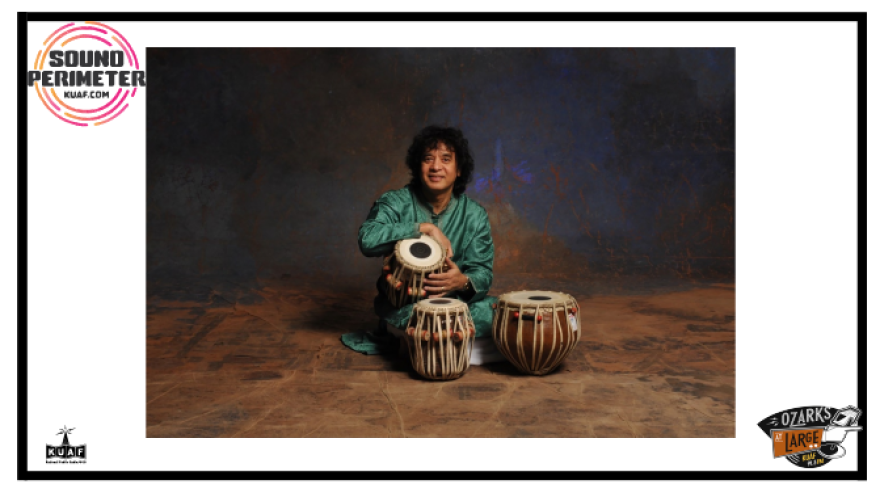Sound Perimeter: Music's Influence On Social Cohesion

Table of Contents
Shared Rhythms, Shared Identities: Music as a Unifying Force
Music's ability to unite people transcends geographical boundaries and cultural differences. The shared experience of music creates a powerful sense of belonging and strengthens group identity, forming what we can call a "Sound Perimeter" – a sonic space where connections are forged and strengthened.
Collective Experiences and Social Identity
Shared musical experiences are fundamental to building social bonds. Consider these examples:
- Live concerts: The energy of a live performance creates a palpable sense of unity among attendees.
- Music festivals: These events bring together diverse groups of people united by their love of music.
- Religious ceremonies: Music plays a crucial role in religious rituals, fostering a sense of shared spirituality and community.
- Dancing: Whether it's a traditional folk dance or a modern rave, dancing to music creates a shared physical experience and fosters social bonding.
- Communal singing: Singing together, whether in a choir or spontaneously at a gathering, creates a powerful sense of collective identity and group cohesion.
These shared experiences release endorphins, creating positive feelings and strengthening social bonds. The feeling of collective euphoria reinforces group identity and strengthens the "Sound Perimeter" within the group. The shared appreciation for a specific genre, artist, or even a single song can instantly create a sense of connection and belonging. These shared musical tastes can act as a powerful foundation for deeper social interactions and the formation of strong, lasting relationships.
Music as a Tool for Social Movements
Throughout history, music has served as a potent tool for social movements and political mobilization. Protest songs, anthems, and revolutionary music have played a vital role in galvanizing people and expressing collective grievances:
- Protest songs: Music has given voice to marginalized communities, articulating their struggles and inspiring collective action. Think of the powerful anthems of the Civil Rights movement or the anti-war protests.
- Anthems: National anthems and other unifying songs create a sense of shared national identity and pride, solidifying the "Sound Perimeter" of a nation.
- Revolutionary music: Music has fueled revolutions and social uprisings, providing a powerful soundtrack for social change.
- Musical theater used for social commentary: The stage has been used to highlight social injustices and prompt societal reflection.
The power of music to inspire social justice and political activism demonstrates its profound ability to transcend individual experiences and create a collective voice. Understanding this power allows for a more effective use of music as a tool for positive social change.
Bridging Cultural Divides: Music's Transcendent Power
Music's power extends beyond national or cultural borders. Its universal appeal allows for cross-cultural exchange and fosters understanding between diverse groups, further strengthening the concept of a global "Sound Perimeter."
Cross-Cultural Musical Exchange
Musical collaborations and exchanges are vital in breaking down cultural barriers and promoting intercultural dialogue. Consider these examples:
- Fusion genres: The blending of musical styles from different cultures creates new and innovative forms of musical expression, reflecting the richness of cultural exchange.
- Collaborations between artists from different cultures: These collaborations demonstrate the universality of music and highlight the common ground shared by people of different backgrounds.
- International music festivals: These gatherings bring together artists and audiences from around the world, fostering intercultural understanding and appreciation.
These collaborations enrich musical landscapes and promote global understanding. They demonstrate the unifying power of music to transcend linguistic and cultural differences, building bridges and fostering connections between individuals and communities across the globe.
Music Education and Inclusivity
Music education plays a crucial role in creating inclusive spaces and fostering social cohesion. Accessible music programs can break down barriers and empower marginalized communities:
- Community music programs: These programs offer musical opportunities to individuals from diverse backgrounds, fostering a sense of belonging and social inclusion.
- Inclusive music education initiatives: These initiatives aim to ensure that all individuals, regardless of their background or abilities, have access to music education.
- Accessibility for diverse populations: Making music education accessible to individuals with disabilities, from low-income families, or from underrepresented communities strengthens the "Sound Perimeter" for everyone.
By promoting inclusive practices in music education, we can build stronger communities and foster social cohesion by empowering individuals and fostering a shared appreciation for the arts.
The Sound Perimeter in the Digital Age
The digital revolution has fundamentally altered how we consume and share music, creating new opportunities and challenges for the "Sound Perimeter."
Online Communities and Music Sharing
Online platforms have transformed how we connect with music and each other, expanding the reach of the "Sound Perimeter" globally:
- Social media platforms for music sharing: Platforms like YouTube, Spotify, and SoundCloud allow for easy music sharing and the creation of online communities centered around musical interests.
- Online music communities: These communities provide spaces for people with shared musical interests to connect, discuss music, and share their experiences.
- Virtual concerts: The rise of virtual concerts allows artists to reach wider audiences and fosters a sense of community among online viewers.
These digital spaces create opportunities for connection and community building, regardless of geographical location. However, the digital realm presents certain challenges that need to be addressed.
Challenges and Opportunities
While the digital age offers incredible opportunities for expanding the "Sound Perimeter," it also presents several challenges:
- Copyright issues: The ease of sharing music online has raised concerns about copyright infringement and the fair compensation of artists.
- Digital divides: Unequal access to technology and the internet can exacerbate existing inequalities and limit access to musical opportunities for some populations.
- Algorithm biases: Algorithmic curation can reinforce existing biases and limit exposure to diverse musical styles and artists.
Addressing these challenges is crucial to ensuring that the digital "Sound Perimeter" is inclusive, equitable, and benefits all participants. Ensuring fair compensation for artists and promoting digital literacy are key steps in creating a positive and sustainable digital music ecosystem.
Conclusion
The concept of a "Sound Perimeter" underscores music's remarkable ability to foster social cohesion, bridge cultural divides, and strengthen community bonds. From shared concert experiences to cross-cultural collaborations and online communities, music creates a powerful sense of belonging and shared identity. By understanding and leveraging the power of music, we can cultivate more inclusive and harmonious societies. To further explore the multifaceted influence of music on social connection, continue your research into the fascinating world of the Sound Perimeter and discover how this vital element shapes our social fabric.

Featured Posts
-
 Report Manchester City Targets Arsenal Great As Potential Guardiola Replacement
May 21, 2025
Report Manchester City Targets Arsenal Great As Potential Guardiola Replacement
May 21, 2025 -
 Loire Atlantique Histoire Gastronomie Culture Un Quiz Pour Les Experts
May 21, 2025
Loire Atlantique Histoire Gastronomie Culture Un Quiz Pour Les Experts
May 21, 2025 -
 Love Monster A Symbol Of Unconditional Love
May 21, 2025
Love Monster A Symbol Of Unconditional Love
May 21, 2025 -
 Oh Jun Sung Wins Wtt Star Contender Chennai Match Highlights
May 21, 2025
Oh Jun Sung Wins Wtt Star Contender Chennai Match Highlights
May 21, 2025 -
 The Goldbergs Exploring The Shows Humor And Heart
May 21, 2025
The Goldbergs Exploring The Shows Humor And Heart
May 21, 2025
Latest Posts
-
 Occasionverkoop Abn Amro Stijgt Aanzienlijk Analyse Van De Groei
May 21, 2025
Occasionverkoop Abn Amro Stijgt Aanzienlijk Analyse Van De Groei
May 21, 2025 -
 Voedselexport Naar Vs Instort Abn Amro Analyseert Impact Heffingen
May 21, 2025
Voedselexport Naar Vs Instort Abn Amro Analyseert Impact Heffingen
May 21, 2025 -
 Abn Amro Groeiend Autobezit Drijft Occasionverkoop Omhoog
May 21, 2025
Abn Amro Groeiend Autobezit Drijft Occasionverkoop Omhoog
May 21, 2025 -
 Abn Amro Huizenmarkt Outlook Stijgende Prijzen En Lage Rente
May 21, 2025
Abn Amro Huizenmarkt Outlook Stijgende Prijzen En Lage Rente
May 21, 2025 -
 Abn Amro Heffingen Halveren Voedselexport Naar Verenigde Staten
May 21, 2025
Abn Amro Heffingen Halveren Voedselexport Naar Verenigde Staten
May 21, 2025
